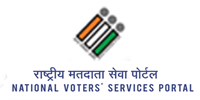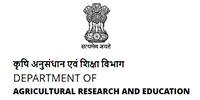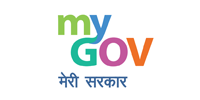Checklist for assessing gender sensitivity in institutional environment
Back ground
There is need for institutionalization of gender concept in RE&D institutions as we must move from the existing concept of gender balancing to gender sensitivity. The checklist may be used as reference while assessing the gender sensitive working environment of ICAR and other institutions for supporting gender sensitive research. Further, this will provide opportunity for self gender sensitization among the staff on how to improve working environment by addressing gender.
Technology description
This checklist follows a gender analysis framework and is intended to be comprehensive, flexible and adaptable. The checklist consists of 23 statements/items to be used as check while gender sensitivity in institutional environment. The equal weightage is assigned to each statement/item in checklist. The checklist statements may be administered to the Institute Head on two point continuums, viz. Yes and No with the scores of 1 and 0, respectively. The overall possible maximum and minimum scores are 23 and 0, respectively. Thus, gender assessment value of each response/institute ranges from 0 to 1 i.e. when it is lowest, the score will be 0 and when it is highest, the score will be 1. The higher gender assessment value indicate greater gender sensitivity in institutional environment. It is calculated by following formula;
Gender Assessment Value= (Obtained Score)/(Maximum Possible Score) = (Out of 23)/23
Use the following checklist for assessing gender sensitivity in institutional environment:
| Sr. No. | Statements | Weigh-tage | Yes | No |
|---|---|---|---|---|
| 1 | Does the institute mandate have any component of gender? | - | - | - |
| 2 | Does the institute support gender equity in all institutional processes? | - | - | - |
| 3 | Is there a gender balanced representation in the Institute Management Committee? | - | - | - |
| 4 | Does the institute design and infrastructure offer equal comfort level to both genders? | - | - | - |
| 5 | Does the institute provide adequate facilities to meet the requirement of both genders? | - | - | - |
| 6 | Does the authority provide opportunities and responsibilities to all staff members without any gender bias? | - | - | - |
| 7 | Whether the active women complaint cell exists in the institute? | - | - | - |
| 8 | Is the institute providing flexible working hours to women staff? | - | - | - |
| 9 | Whether the active creche facility exists in the institute? | - | - | - |
| 10 | Does the authority consider problems of women staff while deputing outstation or outside assignments? | - | - | - |
| 11 | Are advocacy activities/programs conducted periodically to sensitize staff members towards gender issues and concerns? | - | - | - |
| 12 | Is there any guideline shared with staff members regarding gender sensitive approach in the institute? | - | - | - |
| 13 | Is there any guideline or suggestion to the staff members in developing their project plans keeping gender issues in mind? | - | - | - |
| 14 | Does the institute maintain gender disaggregated data? | - | - | - |
| 15 | Does the institute identify and support the activities or interventions to reduce gender gaps and inequalities? | - | - | - |
| 16 | Are both women and men farmers seen as stakeholders, partners, or agents of change? | - | - | - |
| 17 | Does the design of the training plan take note of the gender specific needs? | - | - | - |
| 18 | Is there any specific guideline for various training programs with regard to the gender sensitive approach? | - | - | - |
| 19 | Is the institute having equal and adequate facilities for both male and female trainee farmers? | - | - | - |
| 20 | Does the institute have adequate female support staff to meet the needs of female trainees? | - | - | - |
| 21 | Does the institute integrate life skills and values education with adequate focus on gender sensitivity in training programs? | - | - | - |
| 22 | Is it ensured that all areas of the institute are safe for all male and female? | - | - | - |
| 23 | Whether the institute is easily accessed to the farm women and men? | - | - | - |
How it is women friendly?
It ensures the effective implementation of gender perspective in the institutional environment.
Performance:
It can be tested with any institution.
Locale of dissemination/ application:
Agricultural research and development institution
Outcomes/impact/benefits:
Gender sensitive agricultural research and development institutions
Limitations if any
It requires suitable modification based on the type of research and development institutions
Photos
Nil
Source (author/organization):
Mishra, S., Sarkar, A., Sahoo, L. P., Moharana, G. and Argade, S. D. ICAR-Central Institute for Women in Agriculture, Bhubaneswar, Odisha
Developed/tested/refined:
Developed and tested
Year and purpose:
2017; To assess gender sensitivity in institutional environment
Cost:
Contingency: Nil
Patent/Commercialization:
Nil
Weather further study/ modification are required or not:
Yes, needs further modification based on types of institution.
- Back to previous page
- |
-
Page last updated date:31-05-2024 12:28 PM
 भारत सरकार | Government of India
भारत सरकार | Government of India









